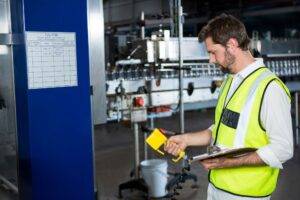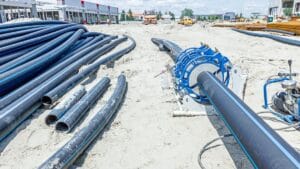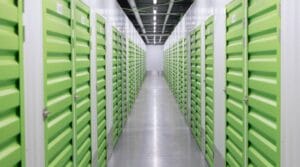Ice has a variety of uses, from keeping perishables fresh to cooling drinks and giving a refreshing touch to your favorite beverage. Plate ice makers, a type of ice-making equipment, generate high-quality ice by following a carefully controlled process. In this article, we’ll explore the science behind ice-making to help you understand how it works and its benefits.
Understanding the Plate Ice Maker Components
These ice machines have a unique design, consisting of several essential parts that work together to generate high-quality ice. These parts include stainless steel ice evaporator plates that are assembled in a vertical position. The plates have a refrigerant tunnel where hot gas and cold gas are introduced to freeze water or defrost the ice.
On top of the evaporator, there’s a water tunnel where water is introduced. From there, the water is dispersed down the ice evaporator plate where the heat exchange occurs. The water falls down the evaporator plate and freezes into ice. Once it reaches a specific thickness, the system will switch over to defrost mode.
How Defrosting Works

During the defrosting process, hot gas is introduced to heat up the cold surface of the evaporator. Once it’s warm, it melts the surface of the ice and drops down the ice outlet. After the ice harvesting process, the system switches back for the next process of ice-making described in the previous section.
Advantages of Plate Ice in Various Industries
Plate ice provides several benefits over other types of ice, making it the preferred choice in several industries. The most significant advantage of this type of ice is its large surface area, enabling it to cool products quickly and efficiently. This feature makes plate ice ideal for cooling perishable food items, ensuring they retain their quality and freshness for an extended period.
In addition to its superior cooling capabilities, this ice machine is known for its energy efficiency. These machines consume less energy compared to other types of ice-making machines, which is a significant advantage in industrial applications where energy consumption can be a concern. The energy savings provided by plate ice extend beyond the ice-making process, as the efficient cooling capabilities of ice can also help reduce overall refrigeration costs.
Another advantage of plate ice is its ability to conform to various shapes, making it useful in different applications. This flexibility allows the ice to be used in industries such as fisheries, meat processing, pharmaceuticals, and the food and beverage industry to maintain the quality of the products and ensure their safety during transportation and storage.
Maintenance and Precautions for Ice Makers

Proper care and maintenance of ice makers are crucial to ensure their longevity and efficient functioning. Regular cleaning and sanitizing of the ice maker help prevent the buildup of bacteria, molds, and other contaminants, ensuring the ice produced is safe for consumption and other applications. Additionally, checking for any leaks in the refrigeration system, as well as ensuring the proper functioning of the ice scraper, is vital for maintaining the quality and integrity of the ice produced.
It’s also essential to avoid overloading the ice maker, as too much water can cause the ice to freeze in a non-uniform manner, leading to inconsistent ice quality. Furthermore, using water with high mineral content can cause scale buildup, which may reduce the efficiency of the ice maker. Utilizing water treatment systems can help address this issue and maintain the efficiency of the ice-making process.
Altogether, ice makers offer a unique way of producing high-quality ice for various industries, from food and beverage to pharmaceuticals, ensuring their needs are met with efficiency and precision. By understanding the science behind ice-making, you can appreciate the benefits it provides and make informed decisions on its applications and maintenance to ensure the optimal operation of your ice-making equipment.










